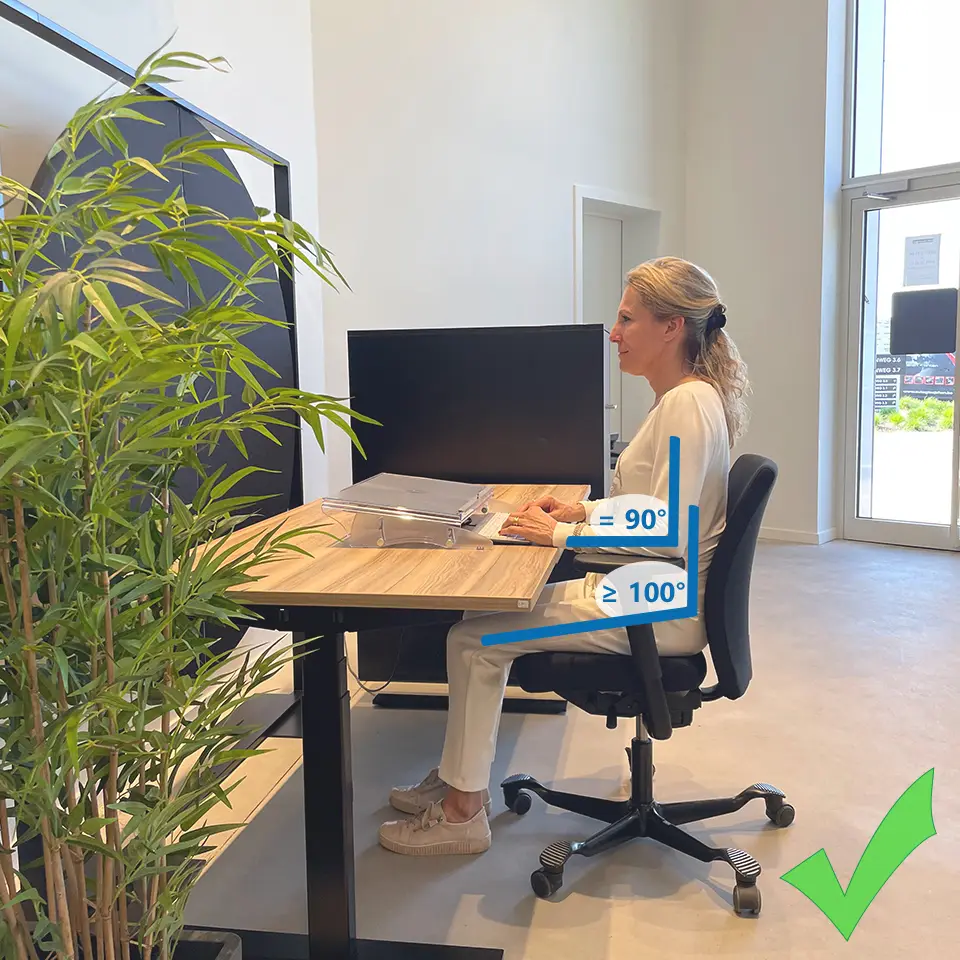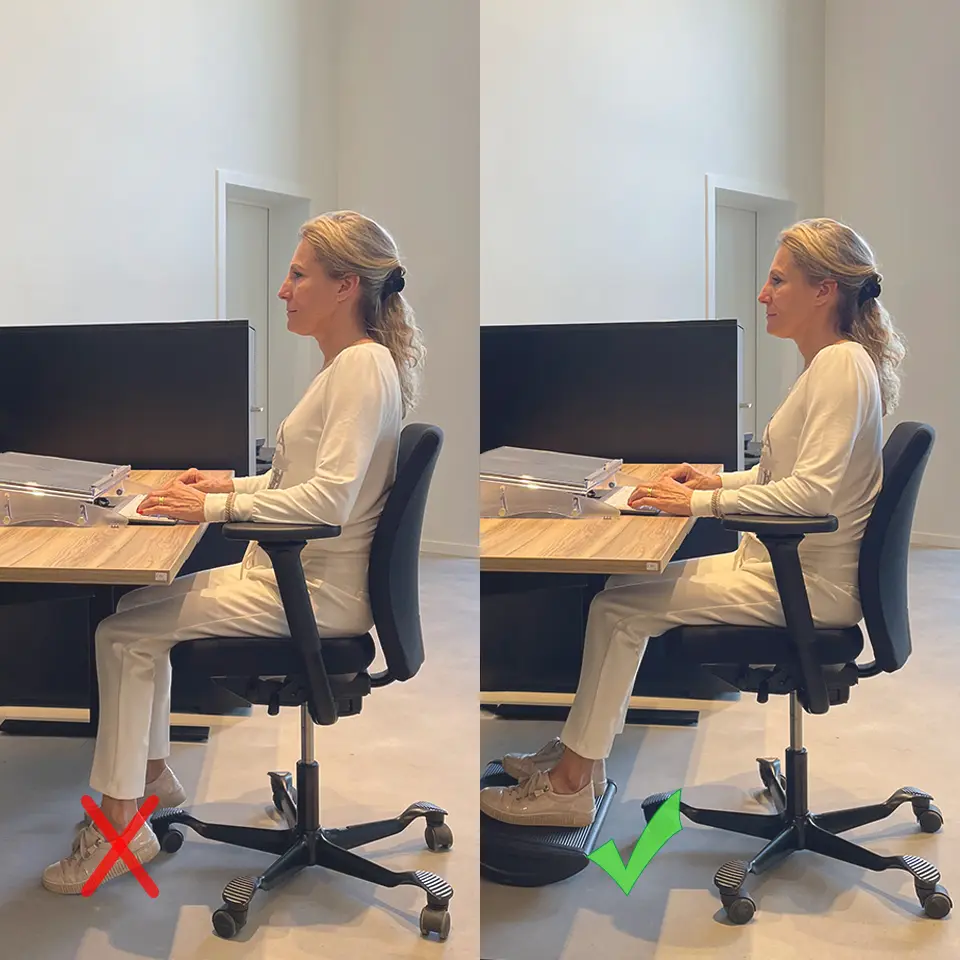How do I determine the correct seat height for my office chair?
The correct seat height of your office chair is crucial for a comfortable and ergonomic working posture. It helps prevent back, neck, and wrist pain and contributes to your overall well-being during long working hours. In this article, you will learn step by step how to determine the ideal seat height, depending on the type of desk you use, and how to choose the right gas lift for your office chair.
Step 1: Determine your ideal sitting posture based on your desk type
1.1 At a fixed desk
If you work at a fixed desk, sit in your chair and slide up to the desk, resting your arms comfortably at a 90° angle on the desk surface. Pay attention to the following points:
- Arm position: Your arms should rest comfortably at a 90° angle on your desk or work surface. The armrests should be at the same height as the desk.
- Leg angle: Your knees should be slightly lower than your hips (open hip angle ≥ 100°). This helps to reduce pressure on your lower back and promotes a healthy sitting posture.
- Foot position: Your feet should be flat on the floor to ensure a stable and comfortable sitting position. This prevents your legs from hanging, which can lead to discomfort or fatigue.
- Space between the back of the knee and the seat: Ensure there is enough space between the back of your knee and the seat of the chair (at least four fingers' width). This reduces the risk of hamstring strain and promotes good blood circulation.

Potential obstacles:
- Desk too high: If you cannot place your feet flat on the floor, your desk is likely too high. Consider using a footrest or an adjustable-height desk.

- Desk too low: If your thighs and upper body form an angle smaller than 90°, your desk is too low. Consider raising the desk with blocks under the legs or using an adjustable-height desk.

1.2 At an adjustable (sit-stand) desk
Do you use an adjustable sit-stand desk? Great! This allows you to achieve the best sitting posture.
Sit in your chair in an open space and ensure that your hips are higher than your knees. The angle between your legs and back should be ≥ 100°. This is also known as the open hip angle. Your feet should be flat on the floor.
Set your armrests at elbow height. Your shoulders should be relaxed, and your elbows should rest at a 90° angle on the armrests. Now adjust your desk to the same height as your armrests. This means your armrests are aligned with the desk surface, which is also your working height.
Pay attention to the following points:
- Arm position: Your arms should rest comfortably at a 90° angle on your desk or work surface. The armrests should be at the same height as the desk.
- Leg angle: Your knees should be slightly lower than your hips (open hip angle ≥ 100°). This helps to reduce pressure on your lower back and promotes a healthy sitting posture.
- Foot position: Your feet should be flat on the floor to ensure a stable and comfortable sitting position. This prevents your legs from hanging, which can lead to discomfort or fatigue.
- Space between the back of the knee and the seat: Ensure there is enough space between the back of your knee and the seat of the chair (at least four fingers' width). This reduces the risk of hamstring strain and promotes good blood circulation.

Step 2: Measure your current seat height
While sitting in your chair and having adjusted your working posture to your desk, measure the distance from the floor to the top of the seat. This is your current seat height, and this value is important for selecting the correct gas lift.
Step 3: Choose the correct gas lift based on your measured seat height
Now that you have measured your seat height, you can choose the right gas lift that falls within the height range of your ideal sitting posture. On our website, you will find the height range of the available gas lifts for each chair, so you can make the best choice.
Example: Suppose you have measured a seat height of 53 cm and you want to purchase a HÅG Capisco 8106. You can choose from the following gas lifts:
- Gas lift 150mm: Seat height range 408 – 540 mm
- Gas lift 200mm: Seat height range 470 – 655 mm
- Gas lift 265mm: Seat height range 555 – 810 mm
In this case, a 200 mm gas lift would be the best choice, as it is closest to your ideal seat height and provides sufficient adjustment options.
Step 4: Test your settings and make adjustments if necessary
After installing the correct gas lift, test whether the chair is comfortable and whether your sitting posture is correct. Adjust the height as needed until you achieve the most ergonomic position.
What to do if the gas lift does not meet your expectations?
If the gas lift does not meet your expectations, feel free to contact us. We are happy to assist you with advice or to help you order a new gas lift.